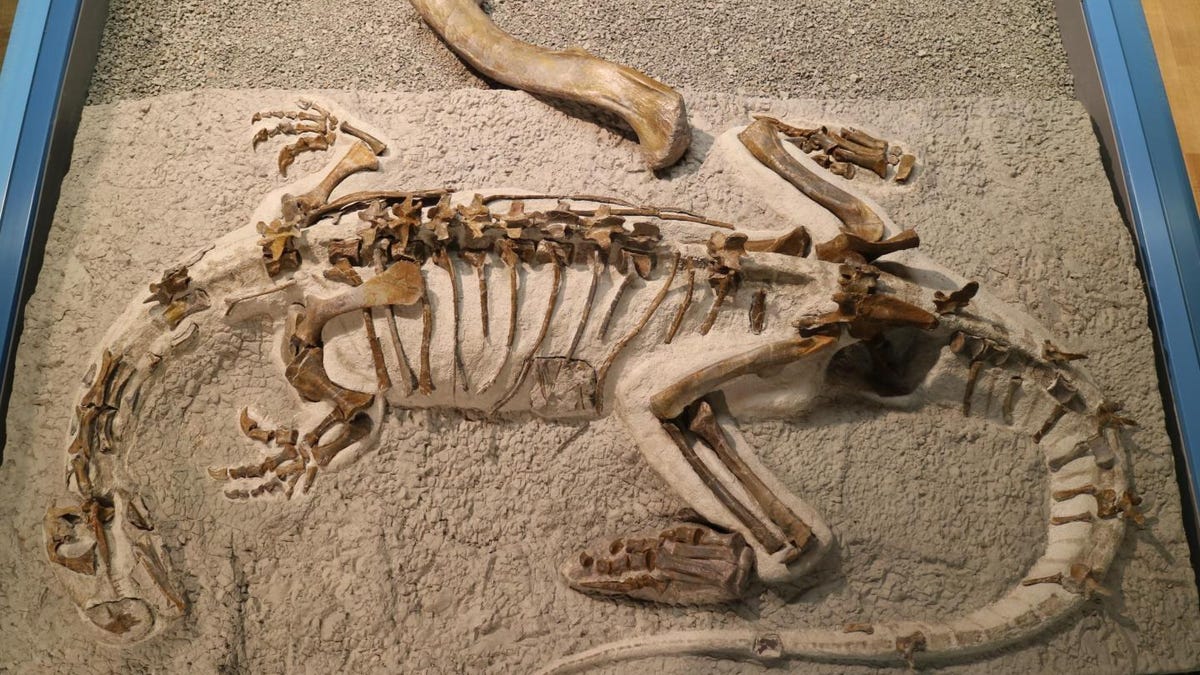Rare baby dinosaur skeleton shows it looked remarkably like its parents
"Fabian" the Plateosaurus is giving scientists insights into the world of dino bambinos.
Human babies look pretty different from human adults. The same can't be said for the Plateosaurus, a large long-necked dinosaur that once dwelled in Europe. An exceptional fossil of a baby Plateosaurus is helping scientists better understand the life and times of these long-extinct animals.
The baby dino, which weighed up to 130 pounds (60 kilograms) and stretched 7.5 feet (2.3 meters) long, was uncovered in 2015 in Switzerland. Paleontologists at the University of Bonn in Germany published a study of the dinosaur, nicknamed "Fabian," in the journal Acta Palaeontologica Polonica this week.
An adult Plateosaurus could weigh in at over 4 tons. The scientists compared the baby's skeleton with adult specimens and found it looked like a scaled-down version of the big dinosaurs.
"The fact that the Plateosaurus juvenile already looked so similar to the adults is all the more remarkable considering that they were 10 times heavier," said study co-author Jens Lallensack in a statement from the University of Bonn on Friday.
The team compared Fabian with what is known about the babies of related dinosaurs thought to have been quadrupedal when young before switching to walking on two legs as adults. That makes Fabian's adult-like characteristics all the more notable.
This illustration shows how Fabian the young Plateosaurus would compare to an adult dinosaur and a human.
Plateosaurus roamed the earth 220 million years ago. Researchers have found specimens of the adults in "bone beds" where mud captured the creatures, but fossilized babies are rare. "The smaller individuals probably did not sink into the mud quite as easily and are therefore underrepresented at the bone beds," said co-author Martin Sander.
Fabian is filling in the gaps about what the young dinosaurs might have looked like, but researchers would love to find more specimens to determine whether the baby dino was an outlier or typical of the species' youngsters. Until then, Fabian makes for a fascinating case study.


